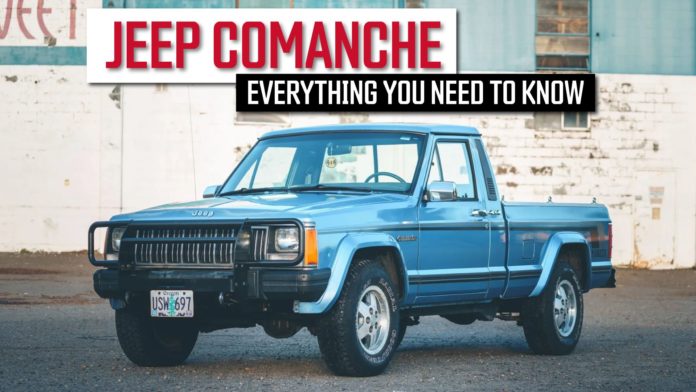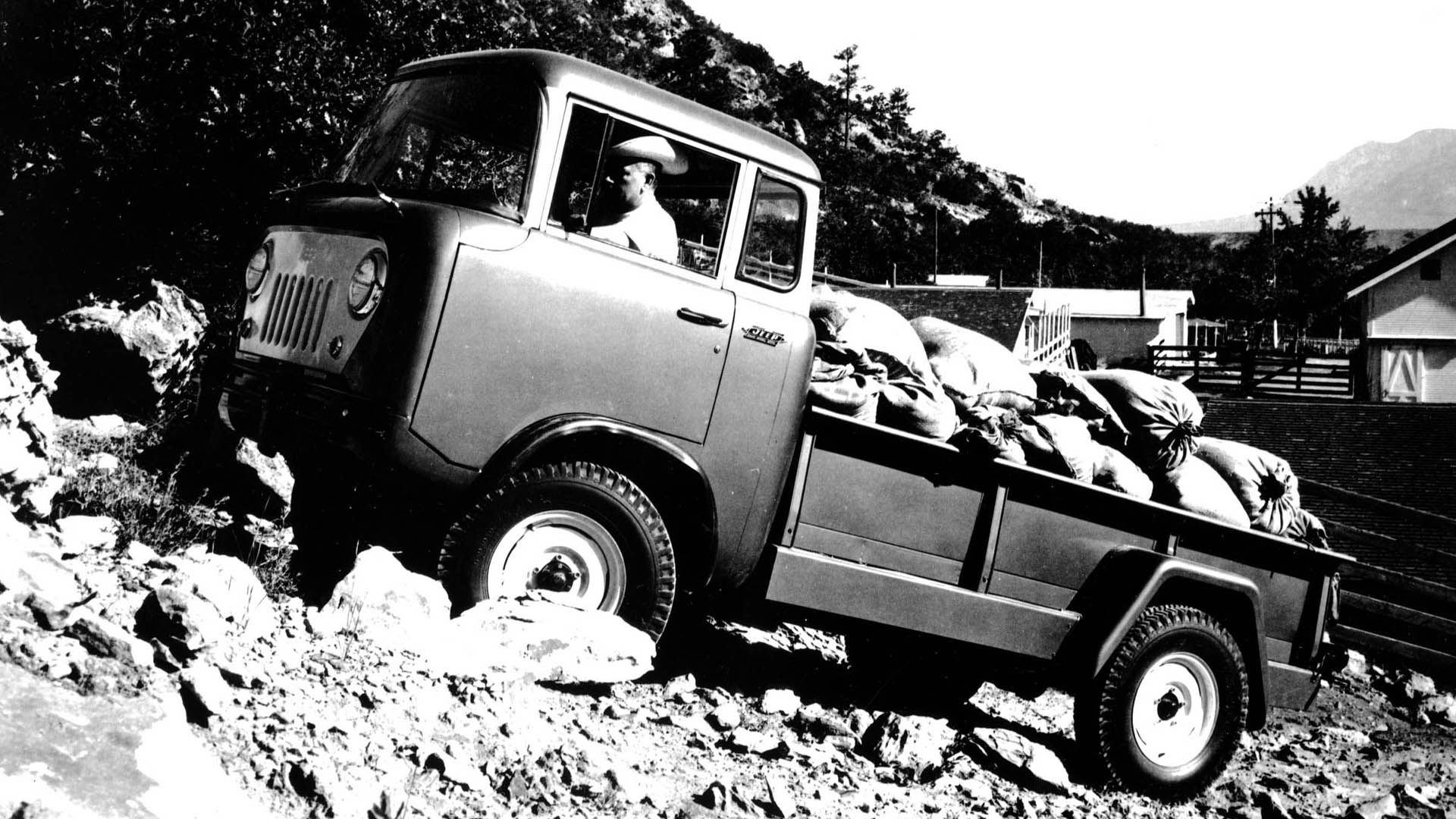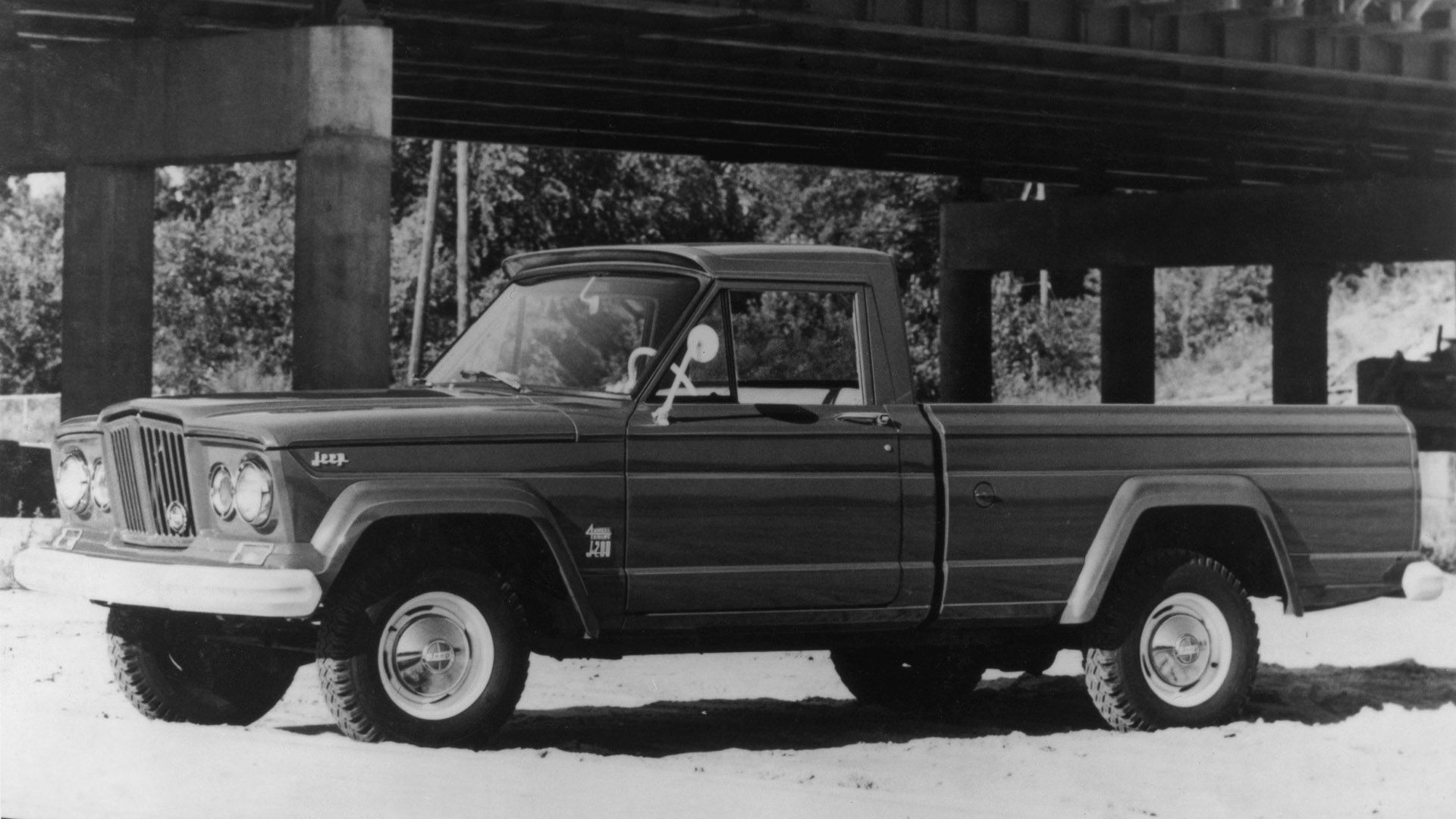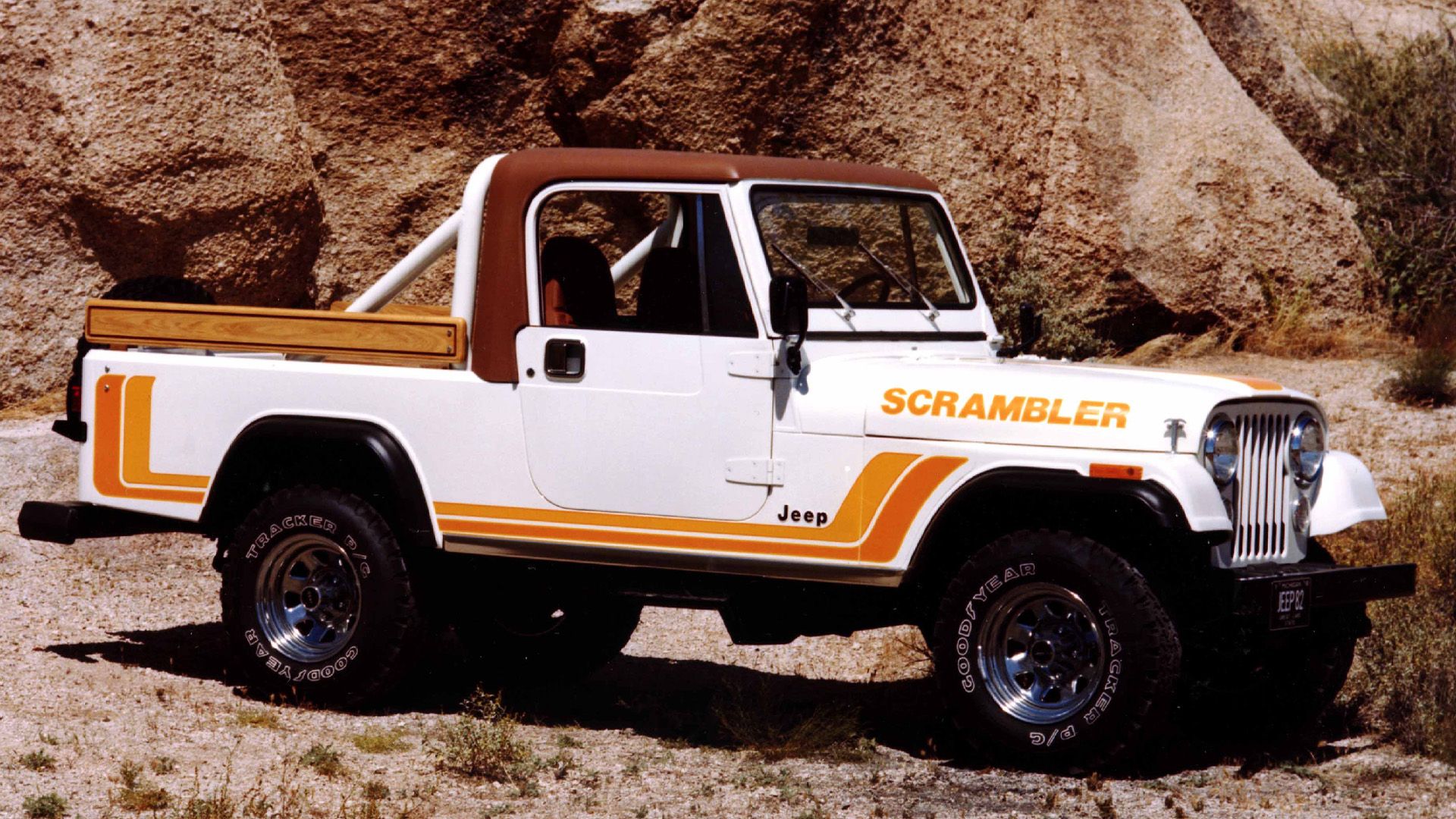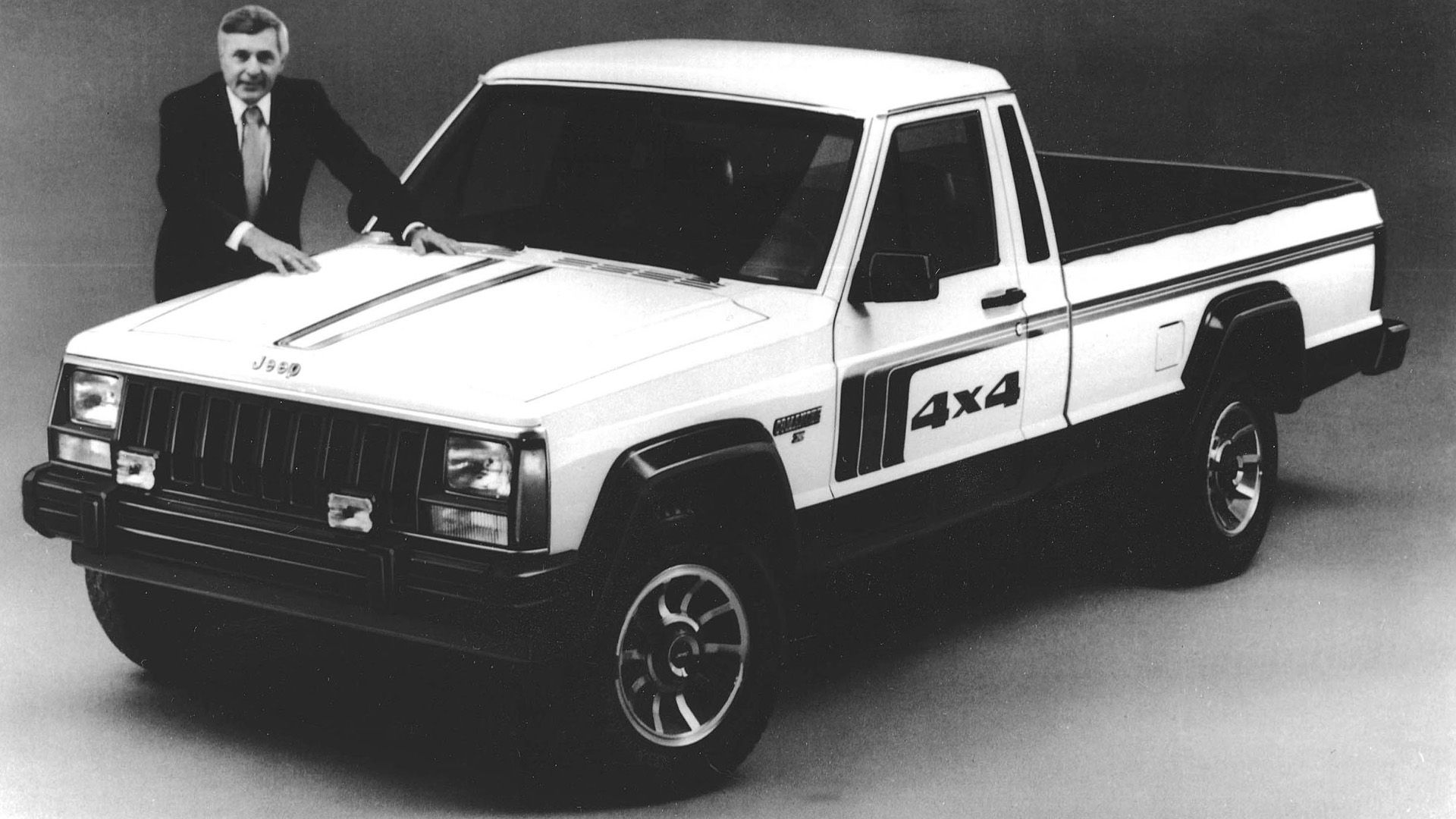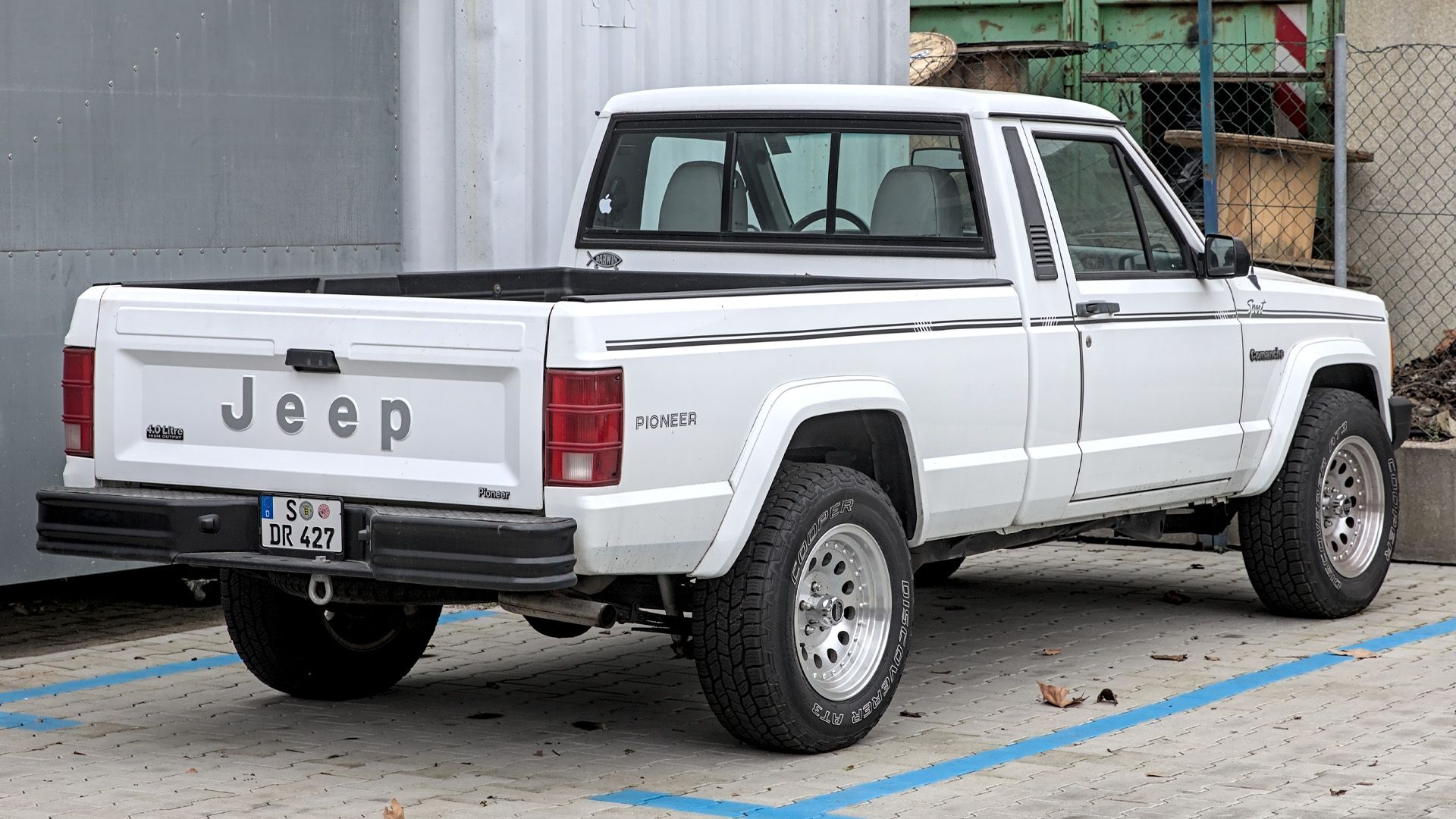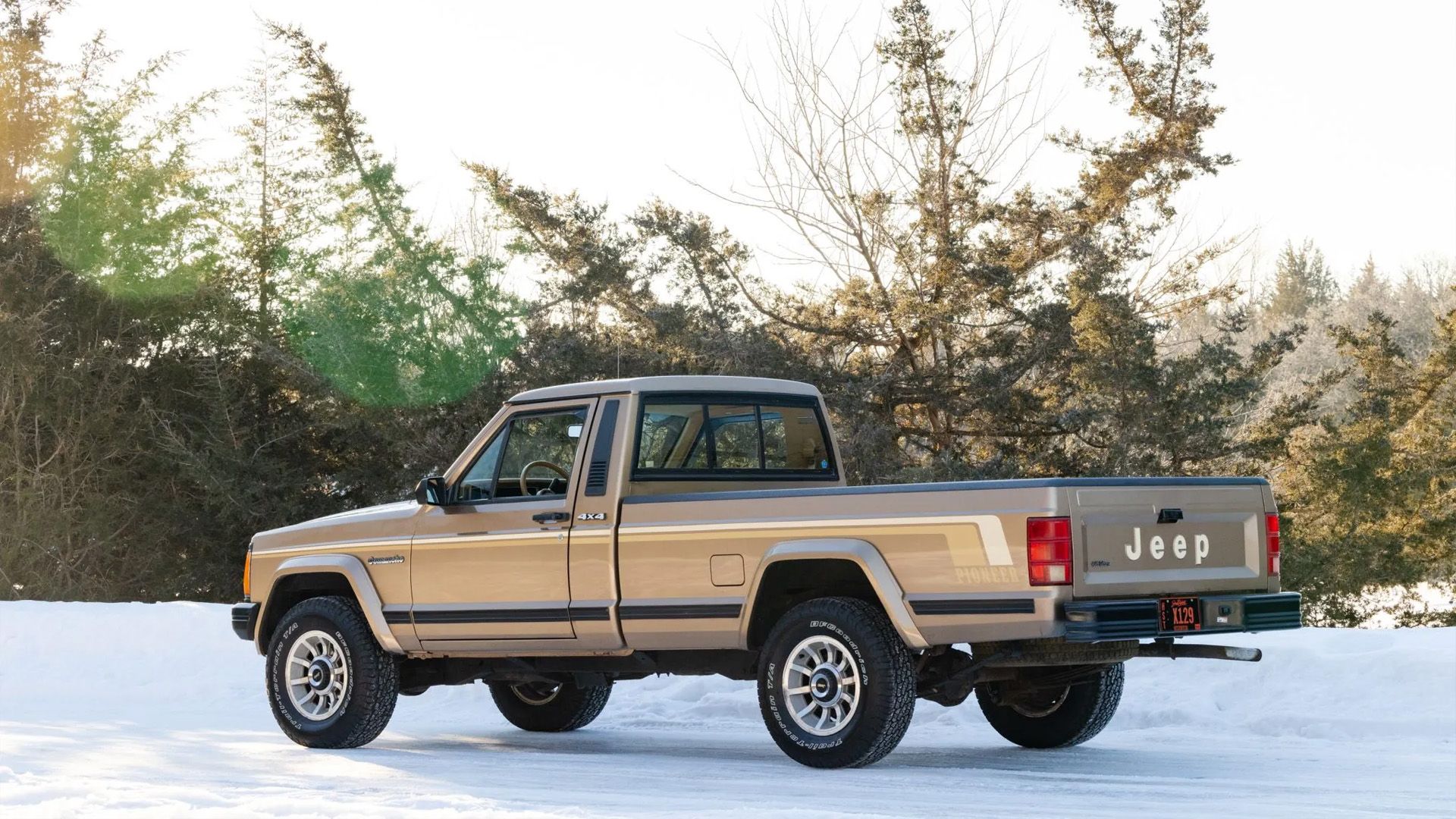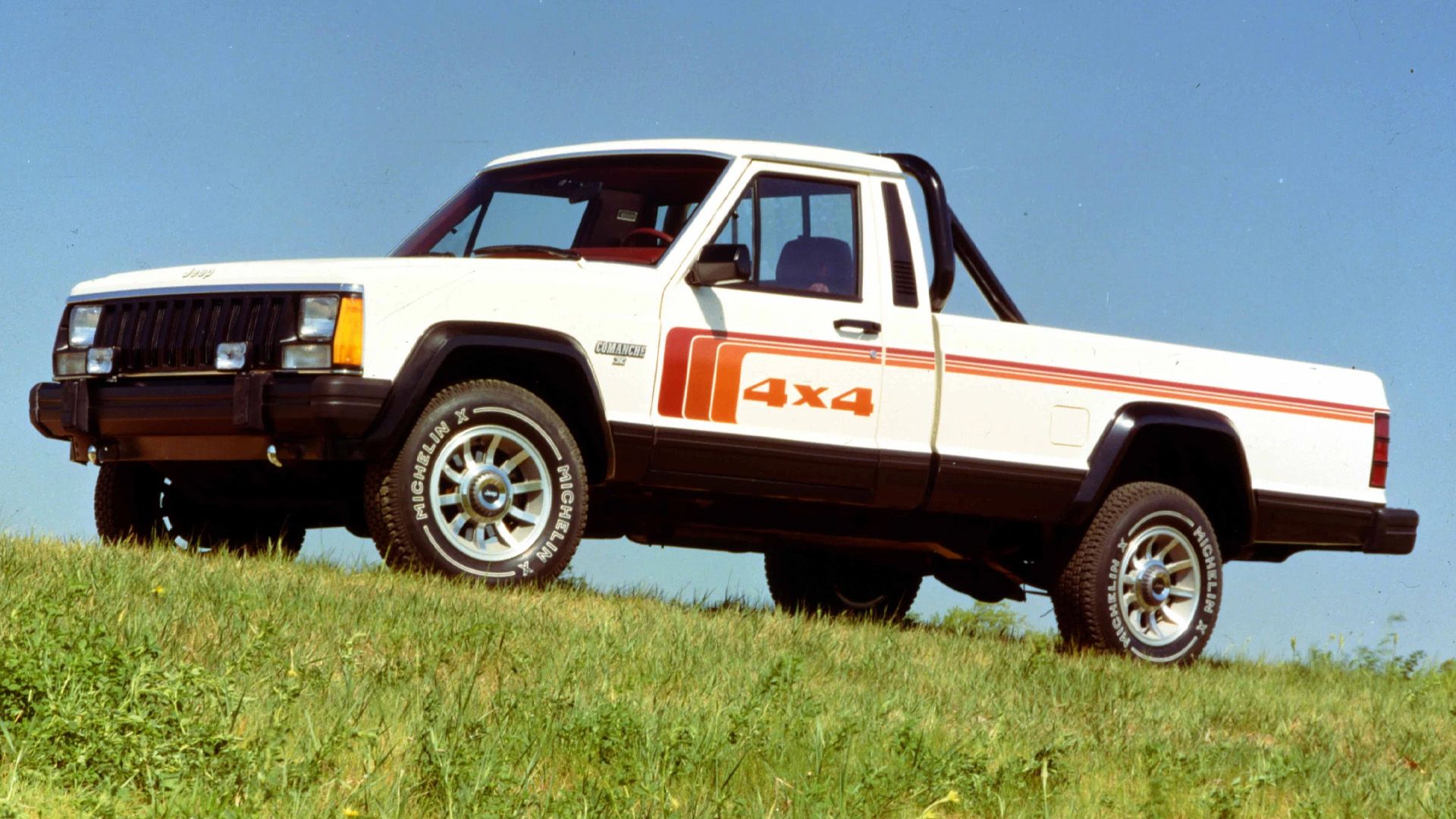In the realm of classic 4×4 vehicles, few evoke as much charm as the Jeep Comanche. Born from a rich legacy with Jeep’s legendary off-road heritage, the 1987 Jeep Comanche, designated MJ, stands as a turning point of the Jeep brand’s innovation and commitment to versatility. Whether you’re an enthusiast seeking a piece of distinct automotive history or a potential buyer eyeing an iconic truck, the Jeep Comanche pickup promises a throne of exclusivity that might just blend in everywhere. In our comprehensive dive into the Jeep Comanche, we’ll touch on prior Jeep truck models, Comanche MJ production numbers, trim packages, available engine configurations, and recall information.
Exploring The Legacy Of Jeep-Based Pickup Trucks
For the uninformed, Jeep-based pickup trucks can be a rabbit hole of interesting revelations. The earliest mass-produced model was the Willys Jeep Truck, produced by Willys-Overland Motors from 1947 to 1965. This first Jeep truck was based on the Willys Jeep Station Wagon and the Jeep CJ-2A.
Early Jeep-Based Pickup Trucks
When Willys merged with Kaiser Motors in 1953, that organization, under the name Willys Motors, began manufacturing the Jeep Forward Control truck. Originally designated as the FC-150, production lasted for nine years, ending with the FC-190 and approximately 30,000 units built. Willys Motors continued the Jeep CJ (Civilian Jeep), Willys Jeep Wagon, resurrected the Jeepster, and introduced the groundbreaking Wagoneer.
Jeep Gladiator SJ
The Jeep Wagoneer, designated SJ, first appeared in 1962 and was marketed as a full-size luxury wagon from 1963 to 1991. At the same time, Willys peeled back the station wagon body, slapped on a removable cargo bed, and offered the Jeep Gladiator truck, which was based on the same architecture and components as the Wagoneer. The Jeep Gladiator was produced from 1963 to 1971, lost the Gladiator nameplate, and continued at first as the J2000 and J4000 models and then the J10 and J20 models from 1974 to 1988. The Jeep Gladiator SJ was the first true predecessor to the Jeep Comanche.
Jeep CJ-8 Scrambler
In 1981, Jeep, now operating under the control of American Motors Corporation (AMC), decided to take its successful CJ-7 short wheelbase 4×4, lengthen the chassis wheelbase to 103.5 inches, and give it a removable half cab. They called this the CJ-8 Scrambler, and it was touted as “America’s first small 4×4 pickup.” The Scrambler lasted until 1986 when it was effectively replaced by the Jeep Comanche.
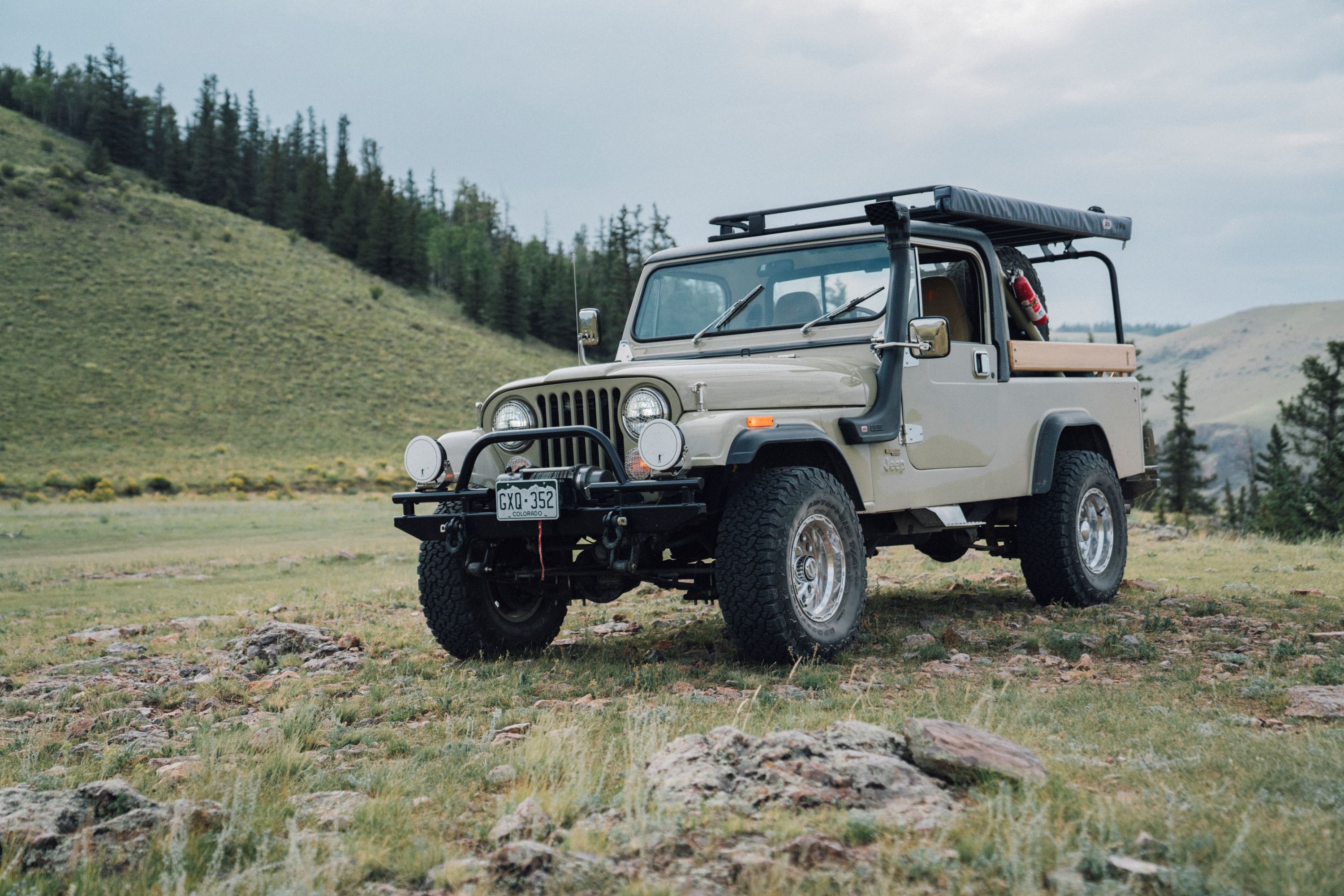
Related
Hardcore Jeep Scrambler Is Ready For Overland Adventures
Ball and Buck is giving the Jeep Scrambler a new lease of life.
Jeep Comanche: Its Origins And A Brief History
Everything that made the Jeep Cherokee great, the Jeep Comanche made it better. Well, mostly better, except spaciousness. All the room added for the cargo bed was taken from the vehicle cabin. But how did the Comanche come about? During the 1980s fuel shortage, AMC determined it needed a cash-cow, low-priced competitor to go after a portion of the truck market share.
According to AMC chairman W. Paul Tippett Jr., they also understood, at the time, that “People are finding trucks a reasonable and sophisticated alternative to cars.” AMC-owned Jeep resolved to produce a dynamic solution that would offer a low price point, truck functionality, and efficient gas mileage. To do this, Jeep used the Cherokee as the platform and utilized as much shared architecture as possible for the Comanche.
The Jeep Comanche was able to hit those set goals with its compact dimensions and without compromising on performance. Tracing its lineage back to the revered Jeep Gladiator, the Comanche MJ, first introduced in 1985 as the 1986 Jeep Comanche, represented a departure from conventional body-on-frame pickup trucks with its unibody construction. However, it still had the decent off-road capability, durability, and utilitarian design expected of a pickup.
The Rise and Fall Of A Legend
An Early Innovator
A big part of the attraction of the Jeep Comanche Truck was the affordable window sticker. The two-wheel-drive model started at $7,049, which would equate to less than $20,000 after an inflation adjustment. This low purchase price also made it the most affordable Jeep vehicle for the 1986 model year.
AMC was able to produce the Comanche with its low price point for several reasons. Chief among them was the size and construction technique. The Cherokee used a unibody as the chassis platform front to back. The Comanche retained the unibody in the front half of the vehicle while integrating the conventional body-on-frame design behind the cab with a removable cargo box. Jeep called this the ‘uniframe’, and it afforded inexpensive construction and impressive payload capacity.
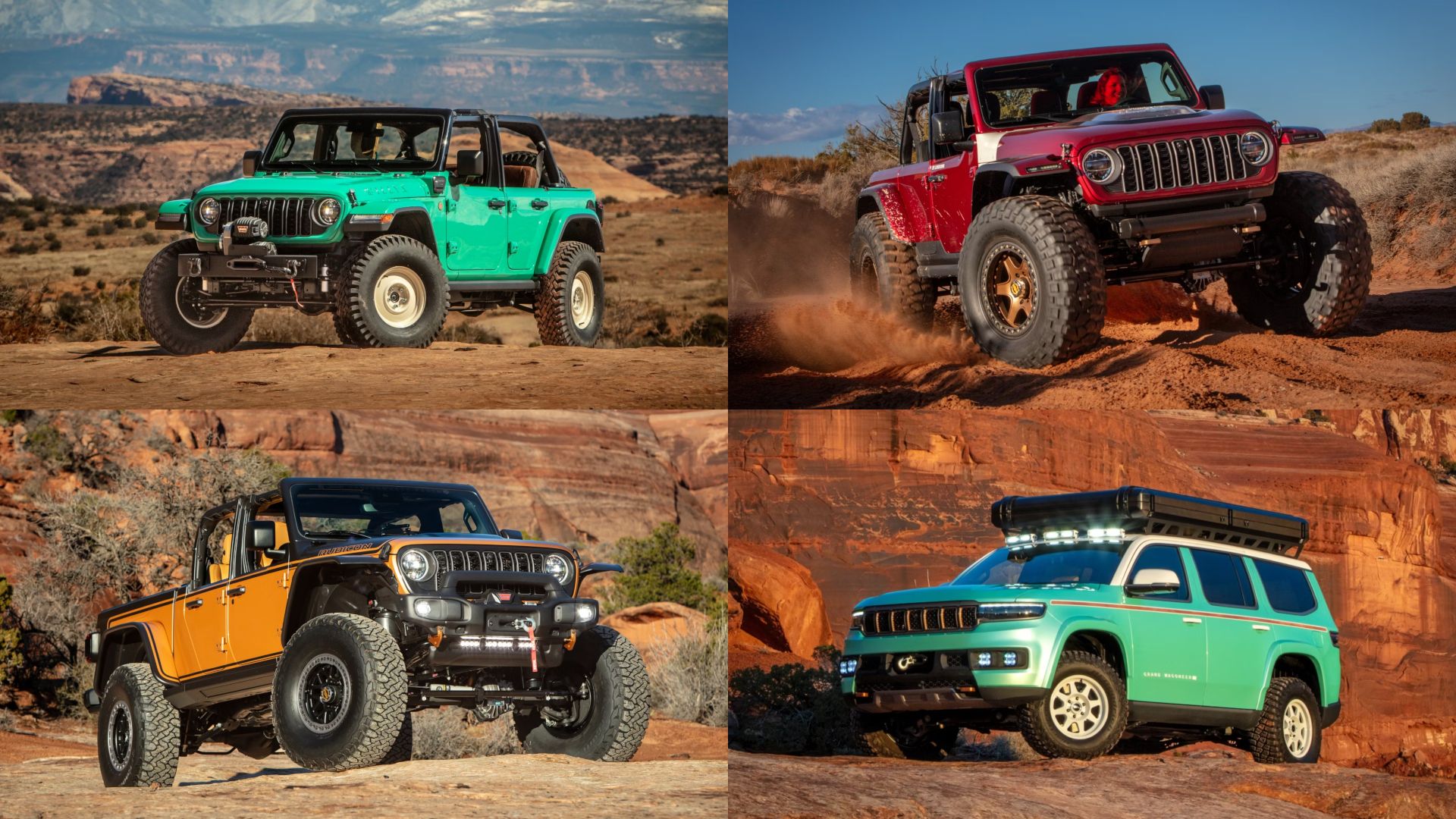
Related
Four New Concept Vehicles Debut At Easter Jeep Safari In Moab
This year’s concepts include two Wranglers, one Gladiator, and one Grand Wagoneer.
Jeep Comanche Production Figures
|
Year |
Units Produced |
|---|---|
|
1985 |
29,245 |
|
1986 |
33,386 |
|
1987 |
43,070 |
|
1988 |
43,718 |
|
1989 |
25,311 |
|
1990 |
9,576 |
|
1991 |
5,188 |
|
1992 |
952 |
Untimely Demise
Despite its initial success, the Jeep Comanche faced stiff competition and changing market dynamics, ultimately leading to its demise in 1992. While the reasons behind its discontinuation varied, including shifting consumer preferences and corporate restructuring, the legacy of the Jeep Comanche Truck did, however, leave a lasting impact on the automotive industry.
Paving The Way For The Future: The Jeep Comanche’s Connection With The Gladiator
Jeep’s hiatus from the pickup segment in America was a lengthy one, but a few concepts kept the dream alive for fans of the brand who wanted a tough off-roader with the versatility of an open bed at the back. Late in 2004, Jeep introduced the Gladiator concept, which had removable doors and an open-air canvas roof. It was an exciting preview of Jeep’s intended comeback into the pickup segment. In 2016, Jeep revealed the Renegade-based Comanche concept, which presented a stretched wheelbase of six inches, a five-foot cargo bed, a Wrangler-style soft top, and even a 2.0-liter turbo-diesel four-cylinder.
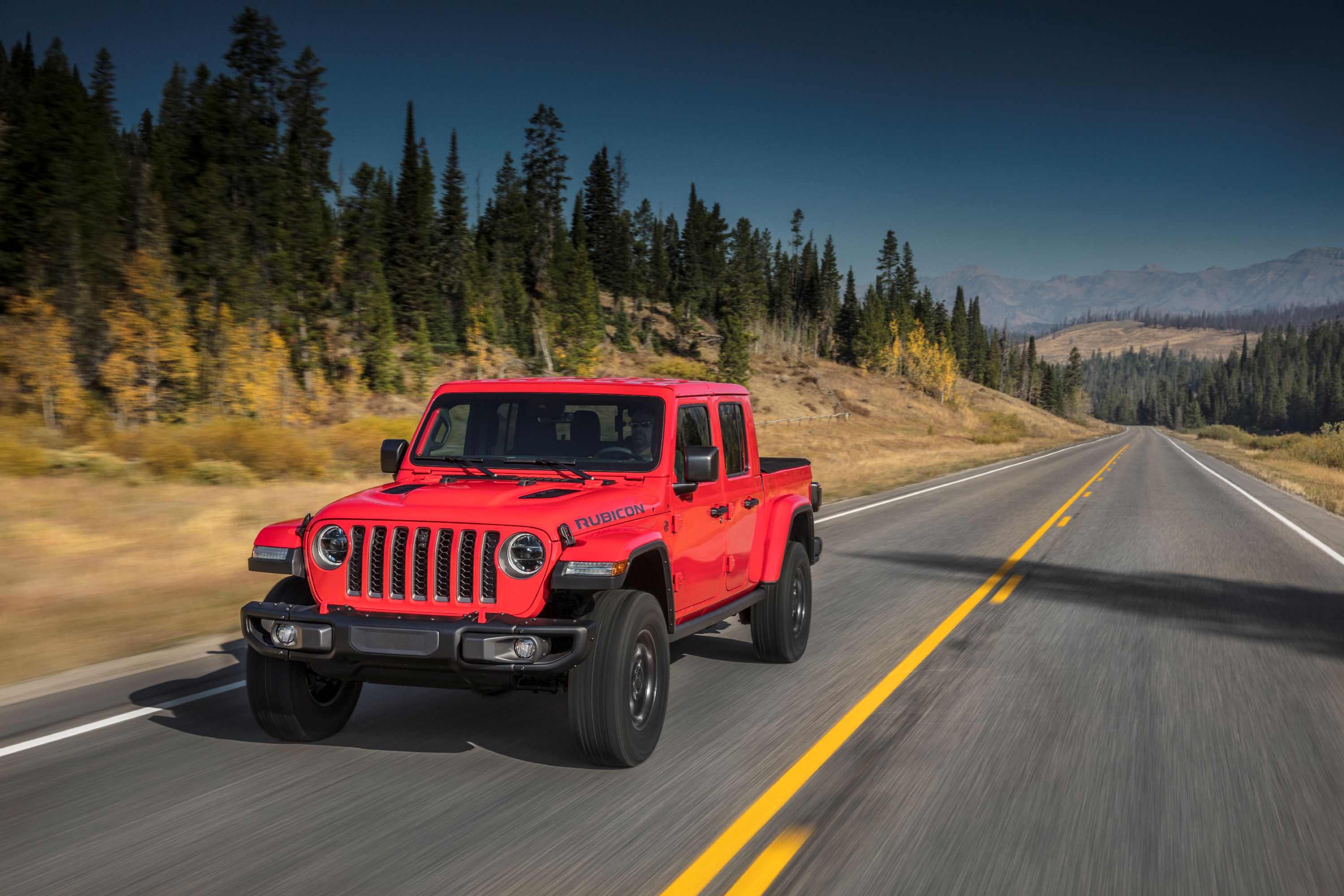
Related
Here’s Why The Jeep Gladiator Isn’t Called The Scrambler
Remember when Jeep’s new pickup truck was known as the Scrambler?
Today, the spirit of the Jeep Comanche lives on in the modern iteration of the Jeep Gladiator JT, which was introduced at the 2018 Los Angeles Auto Show. But there is perhaps a shroud of controversy with the nameplate on Jeep’s current model pickup truck. Looking back at the Jeep CJ-8 Scrambler, that vehicle shares its DNA underpinnings and architecture with the CJ-7. If Jeep wanted to maintain an appropriate nameplate hierarchy, the current JT Gladiator, which shares styling and componentry with the modern JL Wrangler, should be named after its Scrambler predecessor.
In a perfect world, Jeep could take the modern Wagoneer and conceive a full-size Gladiator in 1-ton and ¾ ton applications. But that is not likely in the global auto manufacturing world of Stellantis, where Jeep currently exists. Whatever it’s called, though, the modern Gladiator JT is a brilliant pickup and one of the best at tackling dirt roads.
Is The Jeep Comanche Rare?
The Holy Grail Of Jeep Comanche Trucks
While the new Gladiator appeals to contemporary tastes, the 1987 Jeep Comanche introduced vintage charm, capturing the imagination of enthusiasts seeking a taste of nostalgia. Throughout the Jeep Comanche MJ’s lifespan, 190,446 vehicles were manufactured. It started out in 1985 with just under 30,000 units produced and peaked at almost 45,000 in 1988.
This production volume does not make the Jeep Comanche Truck an exceptionally rare vehicle, but finding a good condition, low mileage version is a tall order. In 1992, the final year of production, only 952 Jeep Comanches came off the assembly line. That fleet was part of the same crop with the desirable Chrysler-manufactured “High Output” 4.0-liter inline straight-six engine. Do those kinds of stats make that allotment the rarest of the rare?
Jeep Comanche MJ Engine Configurations
|
Year |
Engine |
Layout |
Fuel |
Peak Power |
Peak Torque |
Manufacturer |
|---|---|---|---|---|---|---|
|
1986 |
2.5 Liter |
I4, OHV |
Gasoline |
117 hp |
135 lb-ft |
Renix TBI |
|
1986 |
2.8-Liter V6 |
V6, OHV |
Gasoline |
115 hp |
150 lb-ft |
Chevrolet LR2 |
|
1986-1987 |
2.1-Liter Turbo |
I4, SOHC |
Diesel |
85 hp |
132 lb-ft |
Renault J8S |
|
1987 |
4.0 Liter |
I6, OHV |
Gasoline |
173 hp |
220 lb-ft |
Renix MPI |
|
1987-1990 |
2.5 Liter |
I4, OHV |
Gasoline |
121 hp |
141 lb-ft |
Renix TBI |
|
1988-1990 |
4.0 Liter |
I6, OHV |
Gasoline |
177 hp |
224 lb-ft |
Renix MPI |
|
1991-1992 |
2.5 Liter |
I4, OHV |
Gasoline |
130 hp |
149 lb-ft |
Chrysler MPI |
|
1991-1992 |
4.0 Liter |
I6, OHV |
Gasoline |
190 hp |
225 lb-ft |
Chrysler MPI “HO” |
The Jeep Comanche Truck was available in either two- or four-wheel drive, with solid axles front and rear. The pickup came with two cargo bed length options: a seven-foot-long long bed, and a shorter six-foot cargo bed. So what would be the most valued Holy Grail Jeep Comanche MJ? The answer is simply whichever vehicle is the most well-preserved. When considering the various trim models that appeared during the Comanche’s run, there are only a few distinctions but none that would make one vehicle worth more today than another.
Jeep Comanche MJ Trims
|
Year |
Trim |
|---|---|
|
1986 |
Custom |
|
1986 |
X |
|
1986 |
XLS |
|
1987-1992 |
Base (SporTruck) |
|
1988 |
Olympic Edition (built to commemorate Team USA and the 1988 Summer Olympics) |
|
1987-1988 |
Chief |
|
1987-1990 |
Laredo |
|
1987-1992 |
Pioneer |
|
1988-1992 |
Eliminator |
Tips For Buyers
For enthusiasts and collectors considering adding a Jeep Comanche to their collection, navigating the market requires careful diligence. What is the magic formula for buying older used vehicles? Condition, vehicle history, maintenance, and mileage are all major factors. Avoid vehicles involved in prior accidents. Test the body for repairs and look for paint reconditioning. Since it has a cargo box, the truck bed condition should be closely inspected as well.
Opting for models from the late 1980s is advisable, as they tend to exhibit the best balance of reliability and performance. Look for well-maintained examples with minimal rust and documented service history. As for engine options, the 4.0-liter inline-six engine stands out for its robustness and power delivery, ensuring a spirited driving experience both on and off the beaten path. A well-maintained Comanche MJ can easily rack up over 200,000 miles. Today’s typical MJ owners are proud of their little pickup trucks, and if you can find one for sale, they can fetch a pretty penny.
Summary: A Timeless Compact Pickup
The Jeep Comanche remains a timeless icon in the realm of compact pickups, cherished by enthusiasts and collectors alike for its rugged charm and trailblazing spirit. Whether you’re drawn to its storied past, intrigued by its quirkiness, or just want to champion the golden spirit of the 1980s, the Jeep Comanche Truck promises to put you in a very small club of lucky MJ owners.

